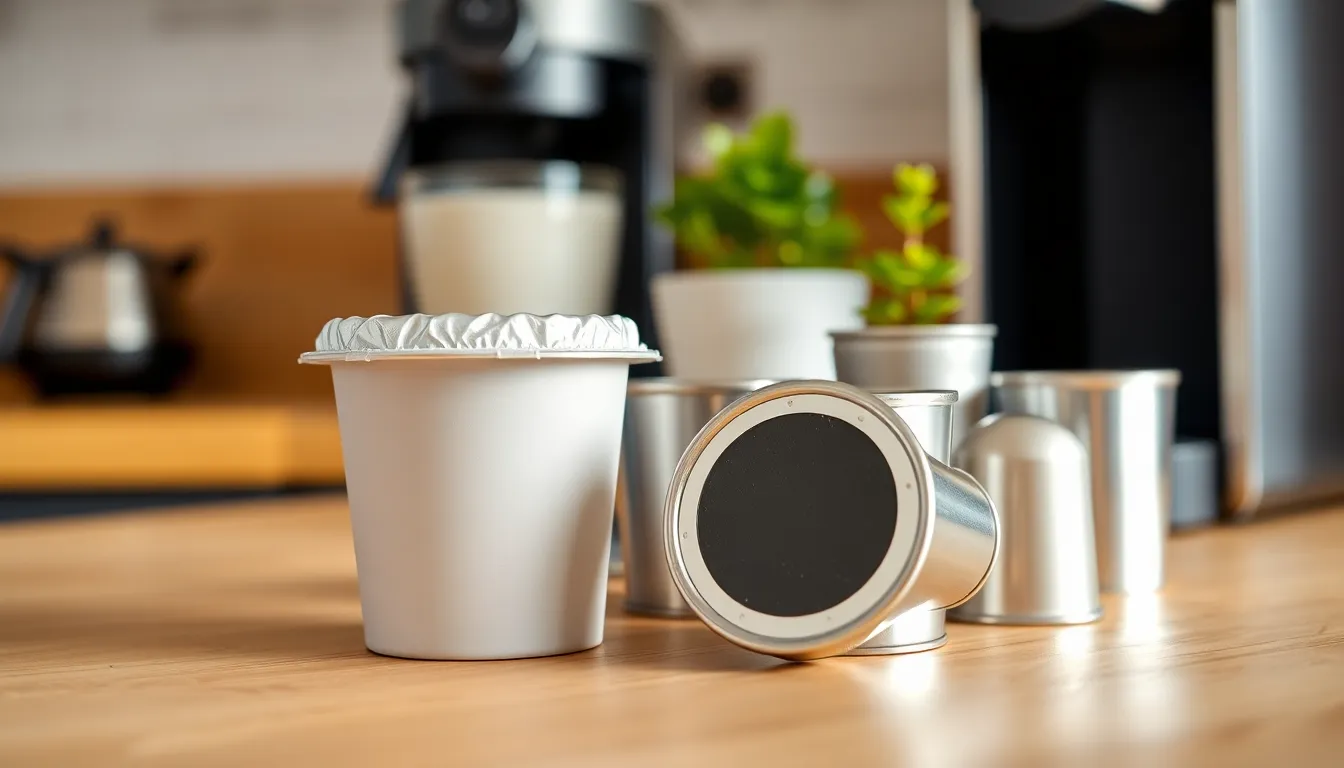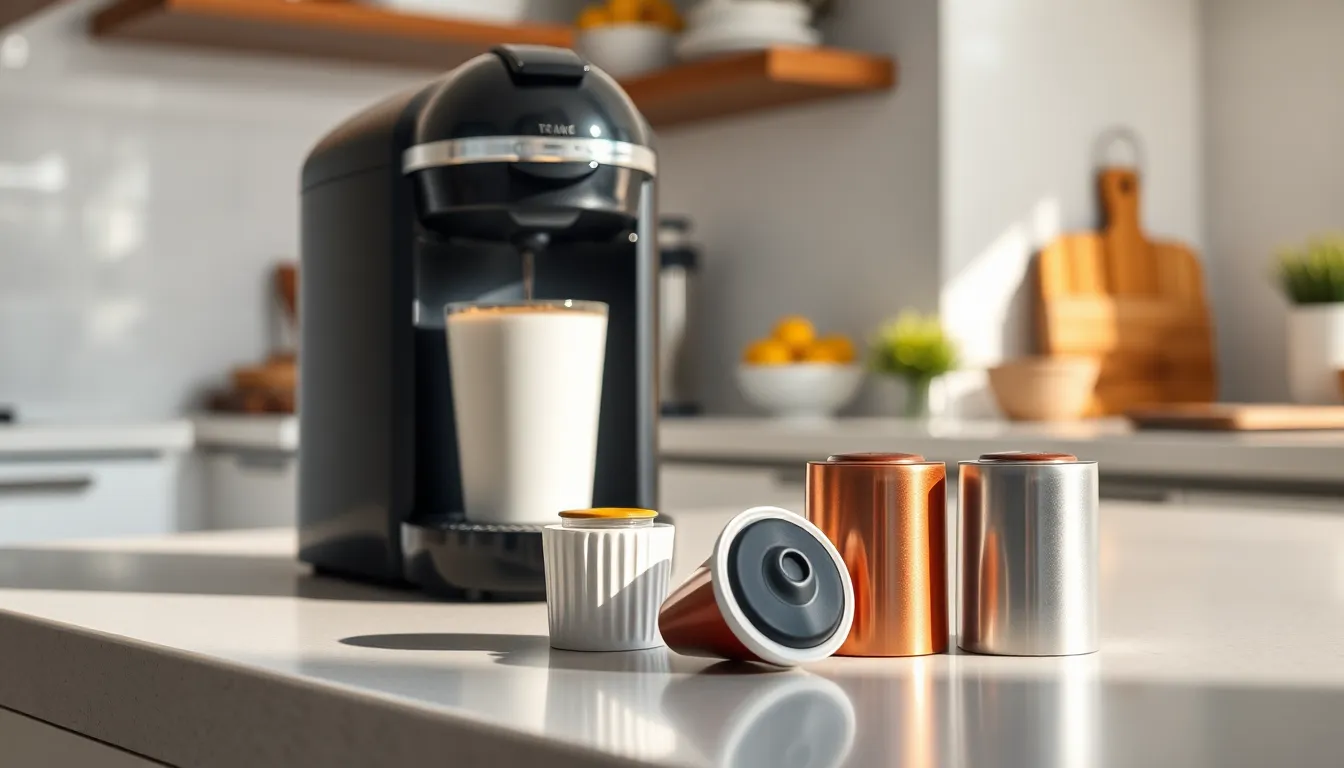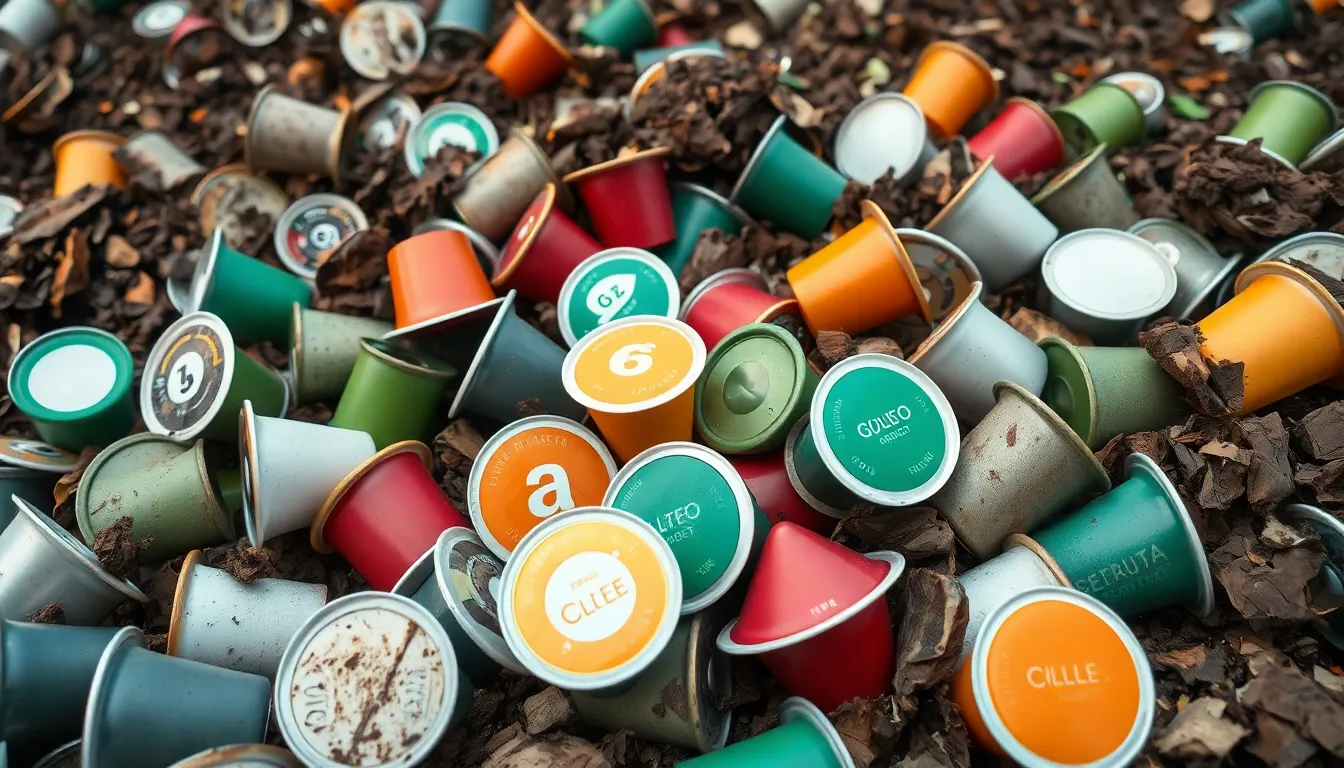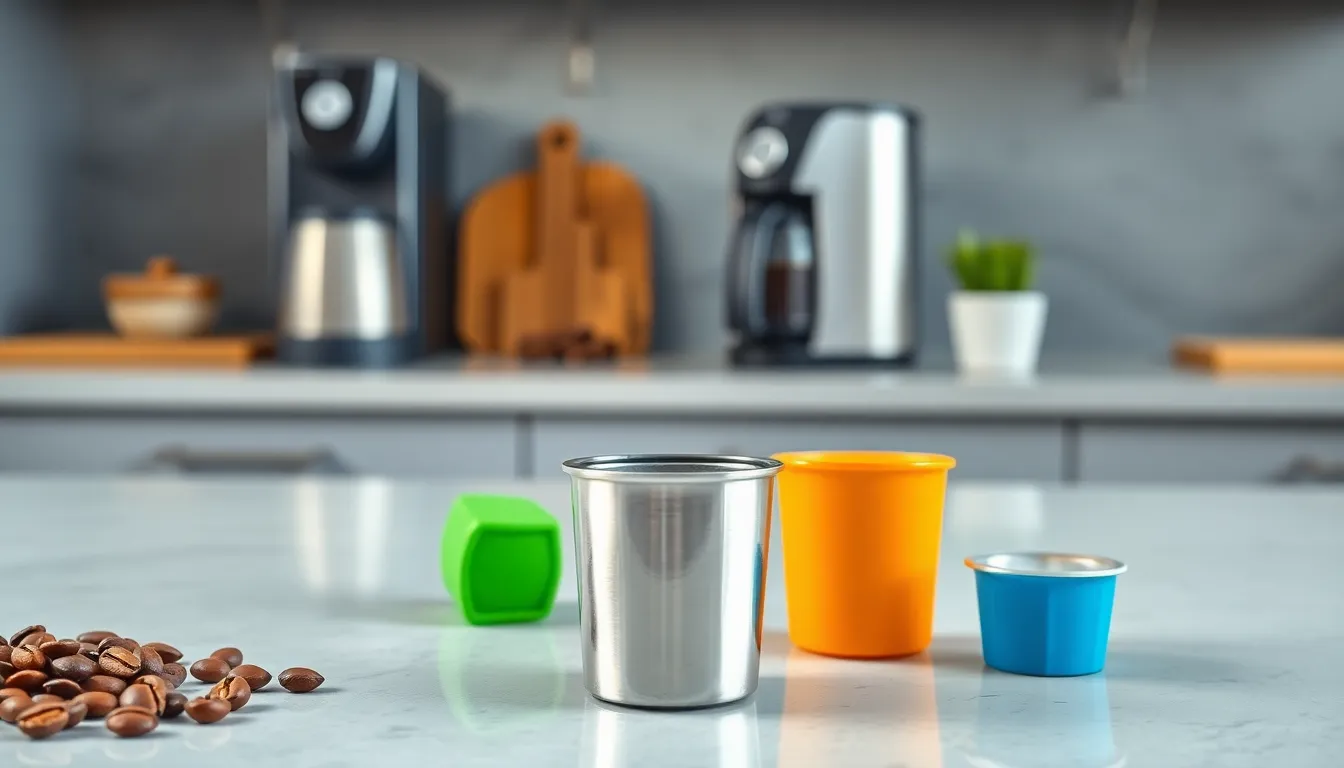Are coffee pods bad for you? It’s a question that many coffee lovers struggle with as they balance convenience with health concerns. You might be wondering if your daily K-Cup or Nespresso pod habit could be impacting your wellbeing.
Coffee pods have revolutionized how we brew coffee at home, offering quick, consistent cups without the mess. But concerns about chemicals leaching from plastic pods, potential environmental impacts, and questions about the quality of coffee inside have left many consumers unsure. You’re right to question what goes into your body each morning, especially with something you consume regularly.
The Popularity of Coffee Pods in Modern Households
Coffee pods have revolutionized how Americans consume coffee at home, with over 41% of U.S. households now owning a single-serve coffee maker. These convenient capsules deliver consistent flavor without the measuring and mess associated with traditional brewing methods. Major brands like Keurig, Nespresso, and Lavazza dominate the market, offering hundreds of flavor varieties to satisfy every preference.
Single-serve coffee systems gained tremendous momentum in the early 2000s when Keurig introduced their K-Cup technology. Sales have increased by 75% since 2012, demonstrating consumers’ strong preference for quick, hassle-free brewing options. The average pod user prepares 2-3 cups daily, translating to approximately 10 billion coffee pods consumed annually in the United States alone.
Time-strapped professionals particularly appreciate the speed of pod brewing—most machines deliver a fresh cup in under 60 seconds. Coffee pods also eliminate common brewing frustrations such as inconsistent strength, improper measurements, and excessive waste from brewing full pots. The variety available lets households with different taste preferences each enjoy their favorite blends without compromise.
Market research shows convenience ranks as the primary purchase driver for 83% of pod users, followed by consistency (64%) and flavor variety (58%). Even though higher per-cup costs averaging $0.40-$0.80 compared to $0.10-$0.15 for traditional drip coffee, consumers continue choosing pods for their simplicity and reliability.
What Are Coffee Pods Made Of?

Coffee pods contain several materials that work together to preserve coffee freshness and deliver a convenient brewing experience. Understanding these components helps evaluate their potential health impacts and environmental footprint.
Common Materials in Coffee Pod Construction
Coffee pods typically consist of plastic, aluminum, and coffee grounds packaged in a small, single-serve container. The plastic used is generally a food-safe polymer designed to withstand brewing temperatures without leaching harmful chemicals. Aluminum capsules appear commonly in premium brands like Nespresso, offering excellent protection against oxygen and moisture. Some manufacturers have developed compostable alternatives using plant-based materials that biodegrade more rapidly than conventional pods. These sustainable options use materials specifically engineered to break down completely in commercial composting facilities, addressing growing environmental concerns.
K-Cups vs. Nespresso: Material Differences
K-Cups feature a plastic cup body with an aluminum foil lid covering the coffee grounds. The plastic component consists primarily of petroleum-based polymers that create challenges for recycling facilities due to their composite construction. Many recycling centers can’t process these mixed materials efficiently, leading to most used K-Cups ending up in landfills.
Nespresso pods use aluminum as their primary material, creating a distinctive capsule design that’s become iconic in the coffee industry. These aluminum capsules excel at preserving coffee aromas and flavors but require more energy during production. Aluminum mining and processing generate important environmental impacts, including toxic byproducts such as mercury and chromium that can harm ecosystems if improperly managed. Nespresso has established dedicated recycling programs to address this issue, though participation rates vary widely by region. The company collects used capsules through mail-in programs and drop-off locations at Nespresso boutiques and partner retailers.
Health Concerns Associated with Coffee Pods

Coffee pods have raised several health concerns among researchers and consumers alike. These concerns primarily stem from the materials used in pod construction and their potential interaction with hot water during brewing.
Chemical Exposure from Plastic Pods
Plastic coffee pods pose important health risks when exposed to heat during brewing. Research confirms that these pods can leach harmful chemicals, particularly xenoestrogens, which mimic estrogen in the body. These hormone-disrupting compounds interfere with your natural hormone balance and have been linked to various reproductive problems. Regular consumption of coffee from plastic pods correlates with reduced sperm count, thyroid dysfunction, and increased risk of breast, ovarian, testicular, and prostate cancers.
Even pods labeled as “BPA-free” aren’t completely safe—they still release potentially harmful compounds when hot water passes through them during brewing. Laboratory studies have detected “estrogenic activity” in coffee samples brewed from plastic pods, indicating the presence of substances that affect hormone-related bodily processes. Additional concerns include furan, a chemical associated with liver damage and digestive issues after prolonged exposure.
The health impact varies based on your consumption frequency, the exact pod material, and individual health factors. Daily users face higher cumulative exposure compared to occasional consumers.
Aluminum and Heavy Metal Considerations
Aluminum coffee pods present substantially fewer health concerns than their plastic counterparts. Current research suggests minimal risk of chemical leaching from aluminum pods during the brewing process. These pods effectively create a barrier between the coffee grounds and potential contaminants, preserving both safety and flavor.
Some consumers express concerns about heavy metals in aluminum pods, but scientific data doesn’t support these worries. No important evidence indicates that aluminum pods introduce harmful levels of heavy metals into your coffee under normal brewing conditions. Major manufacturers like Nespresso use food-grade aluminum designed specifically to withstand the brewing process without compromising beverage safety.
The aluminum construction actually offers a protective advantage—it shields coffee grounds from environmental factors that could introduce contaminants. This protective quality makes aluminum pods a safer alternative for daily coffee consumption compared to plastic options, especially for those concerned about hormone-disrupting chemicals.
The Environmental Impact of Coffee Pods

Coffee pods have revolutionized home brewing, but their convenience comes at a important environmental cost. The environmental footprint of these small containers extends far beyond your morning cup, affecting ecosystems and contributing to growing waste management challenges.
Single-Use Plastic Waste
Coffee pods generate an alarming amount of waste globally, with approximately 576,000 metric tons discarded annually—equivalent to the weight of 4,400 school buses. Every minute, about 29,000 pods end up in landfills where plastic varieties can take up to 500 years to decompose. This extended decomposition period creates persistent environmental pollution as these pods slowly break down, potentially releasing harmful chemicals into surrounding soil and water systems. The scale of this problem continues to grow as more households adopt pod-based coffee systems, creating a mounting crisis of single-use plastic that remains in our environment for centuries after providing just moments of convenience.
Recyclability Challenges
Even though manufacturer claims about recyclability, most coffee pods never make it to recycling facilities. Studies show that up to 95% of aluminum coffee pods end up in landfills each year instead of being recycled. The complex composition of pods—combining plastic, aluminum, paper filters, and coffee grounds—makes proper disposal difficult for consumers. Recycling efforts face multiple obstacles, including low public awareness about correct disposal methods and the practical difficulty of separating materials. Some regions have taken dramatic steps to address this issue; Hamburg, Germany banned coffee pods from government buildings to reduce waste. Even in countries with established recycling programs like Brazil, the success rate remains disappointing, with only 11% of used capsules recycled in 2017. The manufacturing process for aluminum pods creates additional environmental concerns, producing approximately four tonnes of toxic waste—containing mercury, lead, chromium, and other heavy metals—for every tonne of aluminum produced.
Healthier Alternatives to Traditional Coffee Pods

Coffee lovers concerned about the health and environmental impacts of conventional coffee pods have several safer options to consider. These alternatives reduce exposure to potentially harmful chemicals while minimizing environmental waste.
Compostable and Biodegradable Options
Compostable coffee pods offer a healthier alternative to traditional plastic versions by eliminating chemical leaching concerns. These pods break down naturally in the environment, significantly reducing plastic waste and associated microplastic exposure. Made primarily from plant-based materials, they’re designed to decompose quickly in compost settings rather than lingering in landfills for centuries. The natural composition of these pods means fewer synthetic chemicals come into contact with your hot water during brewing, potentially resulting in a cleaner cup of coffee. Many compostable options maintain the same convenience factor as conventional pods while addressing both health and environmental considerations.
Reusable Coffee Pod Answers
Refillable coffee pods represent perhaps the healthiest option for pod coffee enthusiasts. Typically crafted from stainless steel or other durable, food-safe materials, these pods eliminate recurring exposure to chemicals found in disposable plastic versions. Reusable pods give you complete control over coffee quality and freshness, allowing you to grind beans immediately before brewing to maximize flavor and antioxidant content. The initial investment in a quality reusable pod quickly pays for itself through savings on disposable options. Beyond health benefits, these sustainable alternatives create virtually zero waste after hundreds or thousands of uses. Coffee connoisseurs often report improved taste compared to pre-packaged pods, as freshly ground beans preserve aromatic compounds that degrade in pre-packaged alternatives.
How to Minimize Health Risks When Using Coffee Pods

Coffee pods offer convenience but come with potential health concerns that you can mitigate through smart choices. Switching to aluminum pods significantly reduces your exposure to hormone-disrupting chemicals that leach from plastic pods during brewing. Research confirms that aluminum creates an effective barrier against contaminants without releasing harmful levels of metals during the brewing process.
Store your coffee pods properly and use them promptly to prevent mold and mycotoxin contamination that commonly develops in older coffee products. These contaminants can cause digestive issues and compromise your immune system over time.
Limit exposure time during brewing by avoiding machines that excessively heat pods before extraction. Higher temperatures increase the likelihood of chemical leaching, particularly from plastic pods that contain estrogen-mimicking compounds linked to reproductive problems and increased cancer risk.
Consider exploring alternatives like traditional brewing methods using freshly ground coffee beans. Fresh coffee contains higher levels of beneficial antioxidants that decrease over time in pre-packaged pod coffee.
Stay informed about pod materials by checking manufacturer certifications and following research developments in coffee pod safety. Regulatory standards continue to evolve as more studies examine the long-term effects of various pod materials.
For those who prefer the convenience of pods but want to minimize health risks, compostable options made from plant-based materials offer a middle ground that eliminates plastic exposure while maintaining the ease of single-serve brewing.
Conclusion
Your daily coffee habit matters both for your health and the planet. While coffee pods offer undeniable convenience they come with important tradeoffs. Aluminum pods present fewer health risks than their plastic counterparts but still create substantial waste.
For a healthier alternative consider switching to compostable pods or investing in reusable stainless steel options. These choices minimize chemical exposure while reducing environmental impact. If you must use traditional pods opt for aluminum over plastic and follow proper storage guidelines.
Remember that what seems like a small daily choice adds up over time. By making mindful decisions about your coffee consumption you’re protecting your wellbeing and contributing to a more sustainable future. Your perfect cup doesn’t have to come at the expense of your health or the environment.
Frequently Asked Questions
Are coffee pods bad for your health?
Coffee pods can pose health concerns, particularly plastic ones which may leach harmful chemicals like xenoestrogens when exposed to hot water. These chemicals can disrupt hormone balance and are linked to various health issues. Aluminum pods are generally safer as they create a barrier against contaminants. For the healthiest option, consider compostable or reusable pods made from stainless steel or plant-based materials.
How do coffee pods impact the environment?
Coffee pods generate approximately 576,000 metric tons of waste globally each year. Plastic pods can take up to 500 years to decompose, while 95% of aluminum pods end up in landfills despite recyclability claims. The production of aluminum pods also creates toxic waste. This environmental impact has led some regions, like Hamburg, Germany, to ban coffee pods in government buildings.
Are aluminum coffee pods safer than plastic ones?
Yes, aluminum pods are generally safer than plastic ones. They effectively create a barrier against contaminants and don’t leach harmful chemicals during brewing. Major manufacturers like Nespresso use food-grade aluminum designed for safety. While aluminum pods have environmental concerns related to production and disposal, they present fewer direct health risks to consumers compared to plastic alternatives.
What are the best alternatives to traditional coffee pods?
The healthiest alternatives are reusable pods made from stainless steel, which eliminate waste and chemical exposure while allowing control over coffee quality. Compostable pods made from plant-based materials are also good options as they eliminate chemical leaching and break down naturally. These sustainable alternatives not only reduce health risks but can also enhance flavor and provide long-term savings.
How can I minimize health risks when using coffee pods?
To minimize risks, switch to aluminum or compostable plant-based pods instead of plastic ones. Store pods properly to prevent mold contamination. Limit brewing time to avoid excessive heat that increases chemical leaching. Consider traditional brewing methods for fresher coffee. Stay informed about pod materials and safety certifications, and look for pods free from BPA, phthalates, and other harmful chemicals.
How popular are coffee pods in American households?
Extremely popular—over 41% of American households now own a single-serve coffee maker. Since the introduction of K-Cup technology in the early 2000s, sales have increased by 75% since 2012. The average pod user consumes 2-3 cups daily, resulting in approximately 10 billion coffee pods used annually in the U.S. Despite higher per-cup costs, consumers value the convenience, consistency, and variety offered by pod systems.
Are compostable coffee pods actually better for the environment?
Yes, compostable pods are significantly better for the environment than conventional plastic or aluminum pods. Made from plant-based materials, they break down naturally in composting conditions, dramatically reducing plastic waste. However, they still require proper disposal in commercial composting facilities, which aren’t available everywhere. While not perfect, they represent a substantial improvement over standard pods that remain in landfills for centuries.
Do coffee pods affect the taste of coffee?
Coffee pods can affect taste, often producing less flavorful coffee than traditional brewing methods. The pre-ground coffee in pods may lose freshness during storage, and the quick brewing process extracts fewer complex flavors. However, pods do offer consistency and convenience that many consumers prioritize over optimal flavor. Premium pod brands and aluminum pods generally preserve flavor better than plastic options.

